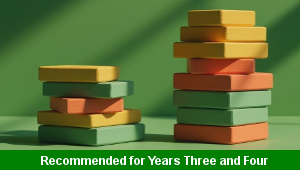Lesson Six – Testing Greenhouses

This design technology teaching pack for Key Stage Two gets the children to practise testing and evaluating completed greenhouse frame structures against the selected success criteria for the matching constructions.
The class can explain how to make changes and improvements to their models to match results obtained from testing so that they can better match each success criteria.
Download this teaching pack including a lesson plan, classroom activities and an interactive presentation to practise testing and evaluating completed greenhouse frame structures against the selected success criteria for the matching constructions
Activities in this teaching pack include display posters to identify and describe some of the different constructions that can used for a garden building and a worksheet to evaluate completed models of garden greenhouses against selected design criteria to identify changes and improvements.
The interactive presentation can be used to explore how to test and evaluate completed greenhouse frame structures against selected success criteria.
This lesson is part of a design technology scheme of work to get the children to select, shape and combine different materials to plan, build and test a model of a garden construction suitable for growing plants and flowers. There are teaching activities for shared learning, differentiated worksheets to support independent learning and interactive presentations to introduce concepts and key skills.
-

English Spelling Assessment
Assess abilities in spelling different vocabulary words based on the National Curriculum programmes of study for Key Stage Two
-

Subtraction Differences
Explain and model some of the informal and formal written calculations skills that can be used to find the difference between pairs of two and three digit numbers
-

Fraction Equivalence
Investigate, compare and record the values of different non-unit fractions using equivalence between their sets of matching numerators and denominators
-

World Wars Poems
Explore and reflect on how poets can use figurative language and verse structures to express themes and ideas about conflicts that have happened in the world
